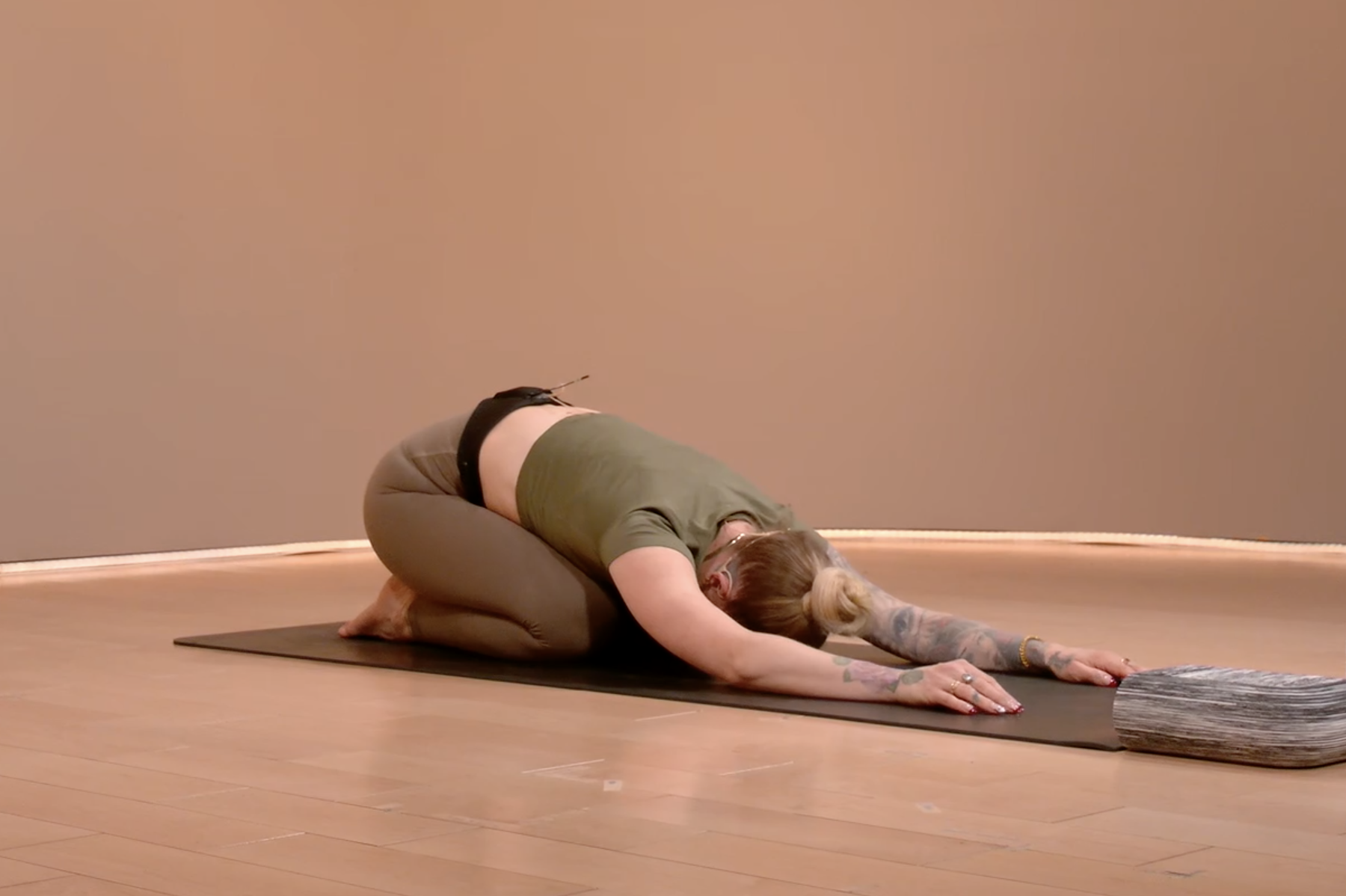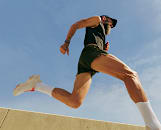
fizkes / iStock / Getty Images Plus via Getty Images
How to Stretch Your Upper Back: 7 Satisfying Moves to Try
Stay limber and give your body the relief it’s been craving with these moves.
By Kells McPhillips•
What Muscles Are In Your Upper Back?
Benefits of Doing Upper Back Stretches
How to Stretch Your Upper Back: 7 Stretches to Try
Dynamic vs. Static Upper Back Stretches
How to Add Upper Back Stretches to Your Routine
The odds are good your upper back could use some stretching. Whether you spend most of the day working on your feet or sitting in front of a computer, everyday life can take a toll on your entire posterior chain. Fortunately, daily stretching and mobility work can help you unwind and perform daily movements more easily.
Discover more ways to reach your goals with Peloton
But how, exactly, should you start incorporating upper body stretch work into your regular routine? Keep scrolling for physical-therapist-approved upper back stretches and more tips on how to care for your upper back.
What Muscles Are In Your Upper Back?
“The upper back is a network of muscles along the spine, neck, and shoulders that help us move our shoulders and neck,” says physical therapist Tamar Amitay. The muscles of the upper back include the ones in the neck (like the upper trapezius and the levator scapulae), the shoulders (like the rotator cuff and the latissimus dorsi, or “lats”), and the upper spine (like the erector spinae).
“It’s a complex, interconnected system that serves any number of physiological functions,” Amitay says. All of these muscles allow you to breathe, maintain mobility in your upper back, and move your arms and head freely.
Benefits of Doing Upper Back Stretches
Performing upper back stretches can come with many everyday benefits, including:
Keeping you limber and mobile: “The upper back is designed to be mobile, flex, extend, and rotate,” she says. “A lack of mobility in the upper back will limit neck and shoulder mobility, especially in overhead and reaching motions like throwing a tennis ball into the air.” This same motion allows you to pull something out of a pantry, unhook a bra, or put on a coat. Upper back stretches can help you preserve that mobility for day-to-day movements.
Fending off pain: In total, the upper back accounts for about 30 percent of neck flexion (bending) and 20 percent of neck rotation, Amitay explains. So you may experience neck pain if your upper body feels tight and congested (which is where upper back stretches come in handy!).
Supporting your fitness routine: Having a mobile upper back will help you perform your best at your favorite activities. Whether you’re a rock climber, a weightlifter, or a runner, your upper body helps you move efficiently and freely.
How to Stretch Your Upper Back: 7 Stretches to Try
Give your neck, spine, and shoulders some love by working these dynamic and static upper back stretches into your rotation:

1. Cat-Cow Stretch
This dynamic upper back exercise loosens your upper back through flexion and extension—plus, it just feels really good.
Come to hands and knees with your hands under your shoulders and your knees under your hips.
Tip your tailbone towards the ceiling to drop your belly toward the floor. Shine your heart forward as you look up.
Tip your tailbone between your legs, arch your back like a Halloween cat, and drop your head to look in between your knees.

2. Child’s Pose
This static pose stretches your lats, or the large triangular muscle in your back that allows your shoulders and arms to move properly.
Start on your hands and knees.
Touch your big toes together and wiggle your knees apart until they’re as wide as your mat.
Sit your butt back onto your heels. Place your head on a block, pillow, or the floor for support.
Walk your hands forward and breathe deeply.

3. Thoracic Extension
For this upper back stretch, you’ll loosen the muscles of your upper back using a foam roller.
Lie down on your back and bend your knees.
Place a foam roller horizontally beneath your shoulder blades.
Interlace your hands behind your head and arch your upper back over the foam roller.
Hold for five seconds and relax.

4. Pec Stretch
“Tight pecs create round shoulders, which then causes some upper back stiffness,” says physical therapist Shannon Leggett. “It might seem strange to stretch something in the front to help the back, but it works.” Here’s how to try this static upper back stretch:
Lie down on your back. Bend your knees and place your feet on the floor.
Place a long foam roller vertically along your spine so that your head and butt are supported.
Bring your arms to shoulder height and let them fall out to the sides like the top of a “T.”

5. Thread the Needle
Perform this pose to warm up before a workout or cool down afterward. “It opens up the shoulders, neck, arms, chest, and upper back, allowing for a light spinal twist and releasing upper back and shoulder tension,” Amitay says.
Start on all fours in a tabletop position, stacking your hips directly over the knees with shoulders, elbows, and wrists in a straight line to the ground.
Thread your right hand up to the ceiling, and then thread it down and beneath your left arm.
Gently place your weight on your right shoulder and stretch your left arm overhead.
Push into your left hand to return to tabletop position and switch sides.

6. Spine Twist
Challenge your core and open your back with this dynamic move. If sitting on the floor feels difficult, grab a chair or pillow instead.
Sit with your legs stretched out in front of you. Keep your spine and pelvis neutral.
Stretch your arms out to the sides in a T-formation. Inhale to lengthen the spine and exhale to rotate the ribs, shoulder, head, and neck to one side.
Exhale and rotate to the other side.
Maintain equal weight on your sit bones (aka the two bones at the bottom of your butt that you sit on) throughout this movement. Make sure you maintain the length of your spine and keep your sit bones from lifting off the mat.
7. Thoracic Rotation
Engage in some feel-good rotation with this dynamic exercise.
Sit on the edge of a chair.
Put a yoga block or ball in between your knees to keep your pelvis and hips from shifting.
Cross your arms across your chest.
Rotate your rib cage to the right 10 times, then rotate your rib cage to the left 10 times.
Dynamic vs. Static Upper Back Stretches
Dynamic stretches involve continuously moving through your range of motion, while static stretches ask you to hold a certain position. According to Amitay, you need both to maintain a flexible and mobile upper back. (There are a handful of each type of stretch listed above.)
When you’re warmed up from a workout, static stretching may be your best bet. “Static stretching requires you to hold your muscles in one position. Because your muscles are warmed up after exercise, it's easier to get into a deeper stretch, holding for 10–30 seconds,” Amitay says. “You can repeat these moves several times; this type of stretching increases flexibility.”
Dynamic stretching, meanwhile, will be more beneficial if you’re stretching before a workout and need to get warmed up. “It uses functional movements to prepare the body for more intense activity and is usually done for 10–12 reps in a controlled, steady way,” Amitay says.
Before you stretch, consider where you’re at right now. Did you just finish a run? Try static stretching. Did you just wrap up a day of sitting at your desk? Dynamic stretches may be your best bet.
Related Articles

Stretching + Mobility
What's the Difference Between Static and Dynamic Stretching—And When Should You Do Each?

Stretching + Mobility
9 Stretches to Relieve Your Lower Back

Stretching + Mobility
8 Upper Body Stretches to Relieve Tension In Your Shoulders, Arms, and Chest

Stretching + Mobility
The 8 Best Stretches to Relieve a Tight Neck
How to Add Upper Back Stretches to Your Routine
When it comes to adding upper back stretches to your routine, Amitay says your motto should be the more, the merrier. (Just be wary of stretching for too long, with too much intensity, or pushing past your body’s limits.)
“If someone is sitting in prolonged static positions, stretching should be added into their daily routine,” Amitay says. Make sure to prioritize movements that counter a seated position. For example, if you sit cross-legged at your desk all day, you’ll want to ensure your mobility and flexibility work involves stretching your legs out.
Both Amitay and Leggett recommend setting aside microbreaks throughout the day to stretch the muscles of your neck, shoulders, and spine. For example, try taking three, one-minute breaks a day to move through the stretches above.
And if you’re stretching every day but don’t start to feel any relief in your upper back, talk to your healthcare provider. “It’s important to recognize where chronic tightness is coming from,” Leggett says. “If someone is doing things to try to help and it’s not working, they should seek out a healthcare professional, like a physical therapist, who can help them.”

Peloton App
Access thousands of classes with no equipment needed.
This content is for informational and educational purposes only and does not constitute individualized advice. It is not intended to replace professional medical evaluation, diagnosis, or treatment. Seek the advice of your physician for questions you may have regarding your health or a medical condition. If you are having a medical emergency, call your physician or 911 immediately.








